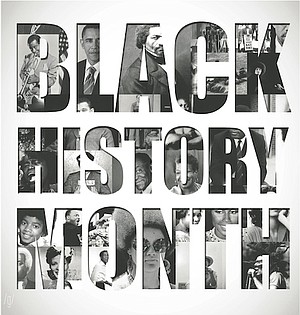2/9/2018

“If race has no history, if it has no worthwhile tradition, it becomes a negligible factor in the thought of the world, and it stands in danger of being exterminated,” said Dr. Carter G. Woodson some sixty-five years ago.
Fearing the African American story would be forgotten fueled the life’s work of the historian, author, and journalist. He was among the first to examine African American history. Over the course of his life, he engrossed himself in the subject matter writing over twelve books on the topic. His thirst of wanting to know everything possible and the quest of his personal mission for the world to never ignore the story of African Americans compelled him to establish the Association for the Study of Negro Life and History with a few others.
The stout academician lobbied schools and organizations to study the history of African Americans. This eventually led to the beginning of Negro History Week in 1926. Since then President Abraham Lincoln and Frederick Douglas were both responsible for the abolishment of slavery and had birthdays in February, Woodson thought it fitting for the weeklong celebration to occur during the second week in February. Presidents that followed supported the week as it evolved into a month and was officially recognized as such by then President Gerald Ford.
In a speech about the observance of Black History Month on February 10, 1976, then President Ford said, “We can seize the opportunity to honor the too-often neglected accomplishments of Black Americans in every area of endeavor throughout our history.” Since then every President that has followed has celebrated how African Americans are woven into the fabric of American history and culture.
In Houston, there are many places to learn about the stony road African Americans have traveled. Below are just a few places to explore it.
*Buffalo Soldiers National Museum
Founded in 2001 by Vietnam veteran Captain Paul J. Matthews, the Buffalo Soldiers National Museum is the only museum dedicated to honoring the legacy of African American soldiers from the Revolutionary War to the present. Visitors to the museum can see various exhibitions on No Man’s Land, Vietnam, Artillery, World War I and World War II, Tech Wall, and the Forgotten Faces of Ft. Craig. In addition, Buffalo Soldiers National Museum has a variety of programs that travel to educate the masses about the Buffalo Soldiers.
*Houston Museum of African American Culture
The Houston Museum of African American Culture collects, conserves, explores, interprets, and exhibits the material and intellectual culture of Africans and African Americans in Houston, Texas, the southwest and the African Diaspora according to their website. HMAAC offers a variety of programs and learning opportunities for visitors of all ages and backgrounds, from guided tours to film screenings, to hands-on arts and craft activities! We strive to provide a variety of entertaining and enlightening learning experiences, to serve as a resource for Houston's diverse landscape of communities, to broaden public awareness of arts and culture through the African American lens and explore how other cultures intersect with African American history, art and culture.
*The African American Library at the Gregory School
Opening its doors in 2009, the library is the first of its kind in Houston and is a Special Collections Library within the Houston Public Library system. The library is housed in the Edgar M. Gregory School, which served as the first public school for African Americans in Houston. The library serves as a resource to preserve, promote, and celebrate the rich history and culture of African Americans in Houston, the surrounding region, and the African Diaspora. The historic building that house the library was reconditioned to serve as a repository and provides an incomparable variety of resources.
*Project Row Houses
Project Row Houses is a community platform that enriches lives through art with an emphasis on cultural identity and its impact on the urban landscape. We engage neighbors, artists, and enterprises in collective creative action to help materialize sustainable opportunities in marginalized communities. PRH occupies a significant footprint in Houston’s Historic Third Ward, one of the city’s oldest African-American neighborhoods. The site encompasses five city blocks and houses 39 structures that serve as home base to a variety of community enriching initiatives, art programs, and neighborhood development activities.
*Freedmen’s Town
The Emancipation Proclamation, the war measure put in place by President Lincoln in 1863 instructing all remaining rebellious states to recognize their slaves as free individuals, enabled newly-freed African Americans to begin creating their own communities across the country, many of them known as “Freedmen Town”. Many Freedmen’s towns flourished including Houston’s Fourth Ward. Large numbers of African Americans left the east Texas plantations and arrived in Houston in 1866, settling along Buffalo Bayou’s southern banks. The community thrived, designated the “Fourth Ward” during a period in which Houston divided the city into political districts. Fourth Ward citizens paved the streets with bricks they made by hand and built a neighborhood, both physically and culturally, by utilizing their skills.
These are just a few of the gems in Houston to celebrate Black History not just in February but all yearlong.
